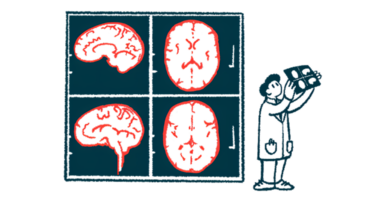AI tool detects sex differences in microscopic brain structures: Study
Findings may help explain why neurological disorders vary according to sex

Microscopic connections between brain cells vary based on biological sex, according to a new study that used machine learning to analyze MRI data from hundreds of healthy volunteers.
Researchers said the findings may help explain why neurological disorders such as multiple sclerosis (MS) frequently vary according to sex.
“Our findings provide a clearer picture of how a living, human brain is structured, which may in turn offer new insight into how many psychiatric and neurological disorders develop and why they can present differently in men and women,” Yvonne Lui, MD, senior author of the study at New York University (NYU), said in a press release.
The study, “Deep learning with diffusion MRI as in vivo microscope reveals sex-related differences in human white matter microstructure,” was published in Scientific Reports.
MS more common in women than in men
Multiple sclerosis is more common among women than men, but other neurological conditions like Tourette syndrome and autism spectrum disorder are more frequently diagnosed in men. The reasons for the sex- and gender-based variations in neurological conditions aren’t fully understood.
Previous studies have explored differences in large-scale brain architecture, such as the size of various brain regions, between men and women. While there’s a lot of variation and overlap, some significant trends have been seen, which suggest biological sex may influence the large-scale development of the brain.
In this study, researchers wanted to examine if biological sex also influences small-scale brain architecture — the individual connections between nerve cells — using an imaging technique called diffusion MRI.
“Better understanding underlying sex differences in brain microstructure would inform how biological sex influences brain health and disease,” the team wrote.
The researchers analyzed data from 471 men and 560 women, all of them cisgender (meaning the men had been assigned male at birth while the women were assigned female at birth), and they ranged in age from 22 to 37 years.
To look for sex-specific brain differences, the researchers employed three different machine learning tools. These tools work by feeding some of the MRI data into a computer, alongside information on biological sex for each scan, and the computer uses mathematical rules called algorithms to “learn” and identify patterns.
The computer can then apply those “learned” patterns to the rest of the dataset, trying to predict biological sex based only on the brain scans.
AI tool reveals brain features that tend to differ based on biological sex
The researchers found that, depending on the specific machine learning tool used, the accuracy ranged from 92% up to 98%. Thus, although none of the models could perfectly divide men from women based on their brains alone, there appear to exist brain features that tend to differ based on biological sex.
“These results highlight the importance of diversity when studying diseases that arise in the human brain,” said Junbo Chen, a doctoral candidate at NYU and lead author of the study.
A major limitation of machine learning is that the computer is unable to share what patterns it is “looking” at to make its judgements, so although these findings imply there are meaningful differences between sexes, it’s not clear exactly what those differences are.
To gain some insight, the researchers conducted an occlusion analysis, where they retrained the machine learning tools using incomplete MRI data. Results showed that removing data about the central or front regions of the brain resulted in a substantial loss of accuracy, which implies that these regions are main areas where differences are located.
“If, as has been historically the case, men are used as a standard model for various disorders, researchers may miss out on critical insight,” said Vara Lakshmi Bayanagari, study co-author and graduate research assistant at NYU.
The team stressed that the specific differences still need to be unraveled, and additional research is needed to determine if they influence the development of diseases like MS. This study was limited to cisgender young adults, so further work is needed to see how biological sex affects brain development in other age groups.






